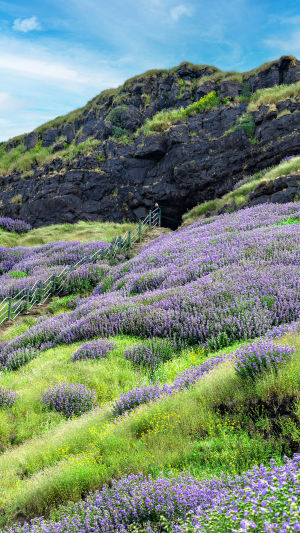Welcome Lykkers! Not everyone gets the chance to witness the Karvi bloom, scientifically known as Strobilanthes callosa, which is one of nature's rarest and most breathtaking phenomena.
Occurring once every seven to eight years, this mass blooming transforms the rugged landscapes of Maharashtra's Western Ghats into a sea of vibrant purple-blue flowers.
Among the prime locations to witness this event is Ratangad Fort, nestled in the Sahyadri mountain range.
RatanGad - रतनगड | Cinematic Vlog Trailer | Most Beautiful Fort | SUCHYA 2022
Video by SUCHYA
<h3>What is the Karvi Plant?</h3>
The Karvi plant is a hardy shrub native to the Western Ghats of India. It thrives in the rocky, laterite-rich soils of this UNESCO World Heritage Site. Most of the time, the plant remains inconspicuous, with its thick stems blending into the arid terrain. However, once in its blooming cycle, it produces an explosion of flowers that attract visitors, botanists, and nature enthusiasts alike.
<h3>The Seven-Year Phenomenon</h3>
The Karvi plant follows a peculiar blooming cycle. After seven years of vegetative growth, the plant dedicates all its energy to flowering, resulting in a synchronized bloom across large stretches of the Western Ghats. Following this, the plants die, leaving behind seeds that germinate and restart the cycle. This extraordinary ecological behaviour adds to the mystique of the Karvi.
<h3>Ratangad Fort: A Scenic Viewing Point</h3>
Ratangad Fort, located near the Bhandardara region in Maharashtra, is a historic hill fort with a stunning natural backdrop. Positioned at an elevation of approximately 4,255 feet, the fort offers panoramic views of the surrounding valleys and peaks, including the famous Kalsubai Peak, the highest point in Maharashtra.
During the Karvi bloom, Ratangad Fort becomes a prime destination for trekkers and photographers. The fort's slopes and trails are carpeted with the vibrant purple-blue hues of Karvi flowers, creating an ethereal atmosphere.
<h3>Trekking to Ratangad During the Bloom</h3>
The trek to Ratangad Fort is moderately challenging and begins at the base village of Ratanwadi, which is also home to the ancient Amruteshwar Temple. The route winds through dense forests, waterfalls, and rocky terrain, culminating in breathtaking views of the Karvi bloom covering the hillsides.
<h3>Key points to note:</h3>
<b>Best Time to Visit:</b> The Karvi bloom typically occurs between August and October during the monsoon season, depending on the rainfall.
<b>Difficulty Level:</b> Moderate, with steep ascents and some rock patches requiring care.
<b>Highlights:</b> The "Nedhe" or Eye of the Needle, a natural hole in the rock wall of the fort, and the vivid carpets of Karvi flowers.
<h3>Ecological Significance of the Karvi Bloom</h3>
The Karvi bloom is more than just a visual spectacle. It plays a crucial role in the ecosystem of the Western Ghats:
<b>Pollinator Attraction:</b> The flowers attract a variety of pollinators, including bees, butterflies, and birds, supporting biodiversity.
<b>Seed Dispersal:</b> The synchronized blooming ensures widespread seed dispersal, helping the plant adapt to its challenging environment.
<b>Soil Stabilization:</b> The Karvi plant's extensive root system prevents soil erosion, which is especially critical in the monsoon-heavy Western Ghats.
<h3>Preserving the Phenomenon</h3>
While the Karvi bloom is a natural wonder, it is vulnerable to human activities like deforestation, over-tourism, and pollution. Efforts are being made by local communities and environmentalists to raise awareness and protect the fragile ecosystems of the Western Ghats. Responsible tourism, including adhering to trekking guidelines and avoiding littering, is essential to preserve the beauty of this phenomenon for future generations.
The Karvi bloom at Ratangad Fort is a rare and mesmerizing event that showcases the beauty and resilience of nature. For those seeking a blend of adventure, history, and unparalleled natural beauty, a visit to Ratangad during this bloom is an unforgettable experience. As you stand amidst the flowering Karvi, surrounded by the rugged peaks of the Sahyadri, it's a reminder of the delicate balance that sustains life in these ancient hills.





